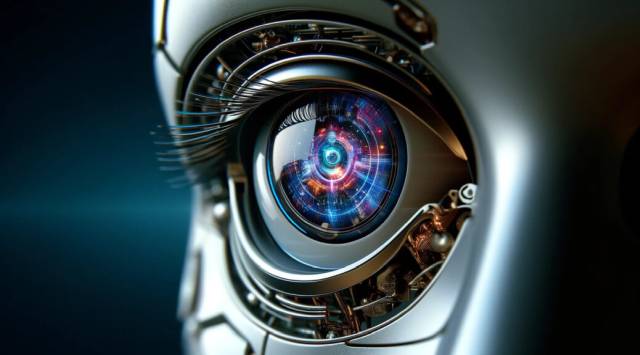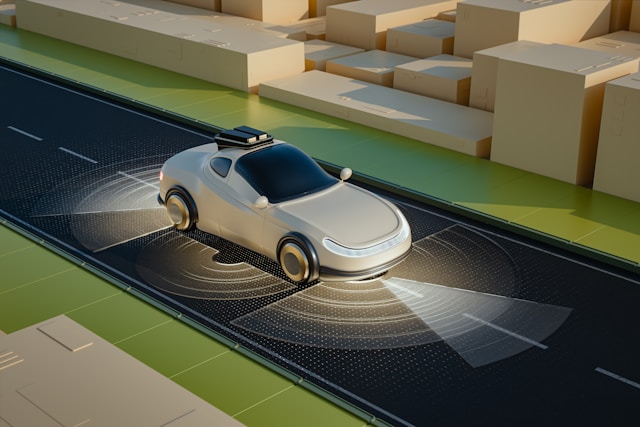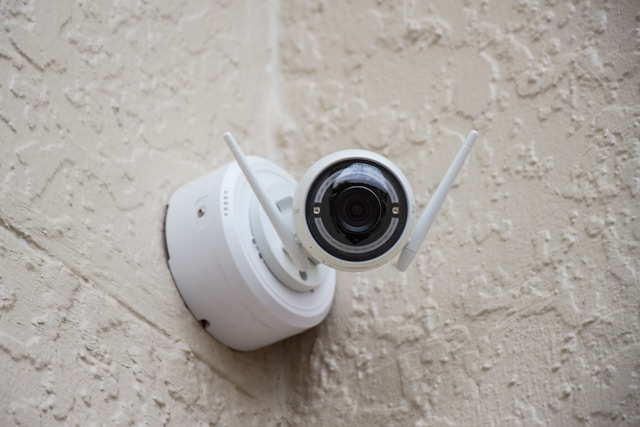AI vision is changing our world at lightning speed—honestly, some of the stuff happening right now would’ve sounded like pure sci-fi not that long ago. If you’re even a little curious about where tech is headed in 2025, you really can’t afford to tune out the wild trends happening in AI vision. We’re talking about everything from upending whole industries to transforming your everyday experiences. At this point, AI-powered visual perception isn’t just a cool feature—it’s pretty much set to drive the next wave of innovation.
So, let’s dig into how AI vision is shaking things up and why it’s quickly becoming the beating heart of tomorrow’s tech breakthroughs.
The Journey of AI Vision: From Sci-Fi to Everyday Life
First off, what exactly do we mean when we talk about “AI vision”? You’ll hear folks call it computer vision technology too. Basically, it’s all about giving machines the ability to interpret and make sense of visual information—kind of like how our own eyes and brains work together. With machine learning and deep learning thrown into the mix, these systems can spot objects, analyze entire scenes, and even guess what might happen next.

Fast forward to 2025: advancements in convolutional neural networks and super-sophisticated image processing algorithms are pushing these abilities to new levels. The bottom line? Machines aren’t just “seeing” anymore—they’re actually understanding what they see. And honestly, that opens up endless possibilities across so many fields.
What’s Hot: Key Trends in AI Vision for 2025
Alright, so what should you actually keep an eye on this year? Here are some future trends in AI vision that everyone in tech is buzzing about:
- Edge AI Vision: Smart cameras are getting seriously powerful. Now, real-time object detection using edge functions doesn’t need to go all the way back to a cloud server—it happens right on your device (think: way faster reactions and hardly any lag).
- Multimodal Perception: This is where things get interesting—AI vision is teaming up with audio and other sensor data for richer context awareness. It means automation that feels a lot “smarter.”
- Explainable AI: As these applications spread out into more areas (some high-stakes!), people want to know why an algorithm made a certain call. Explainable algorithms lay it all out—super important for anything involving safety or big decisions.
- Self-supervised Learning: Instead of needing tons of human-labeled data (which takes forever), models are learning more on their own. This speeds things up and saves money.
And here’s the thing—these aren’t just theoretical ideas anymore. Major companies and scrappy startups alike are already rolling them out worldwide.
How Industries Are Using AI Vision Right Now
Picture this: you walk into a retail store and cameras instantly check which shelves are low on stock—and even predict which products will run out first. Or imagine factories where robots with built-in visual smarts catch defects before anything leaves the building.
Let’s zoom in on a few places where this tech is making waves:
- Manufacturing: Factories use top-notch AI vision algorithms for inspection, keeping quality high without slowing down production.
- Retail: Think cashier-less checkouts or personalized product suggestions based on what shoppers pick up—yep, that’s computer vision at work.
- Healthcare: Hospitals are using deep learning-powered medical imaging for early disease detection, helping out during surgeries, and even offering remote diagnostics.
- Automotive: Self-driving cars rely on cutting-edge AI vision to navigate safely through complicated environments.
- Agriculture: Drones with object recognition monitor crops’ health from above and help farmers boost yields.

If you’ve seen any of these in action—or if they’ve shaken up your own workplace—I’d love to hear about it! Drop your thoughts below.
Game-Changing Applications Coming in 2025
Some uses for AI-powered image recognition are really set to grab headlines this year:
Real-Time Object Detection for Public Safety
Smart cities count on fast, accurate identification of traffic issues or suspicious activity thanks to advanced camera networks.
Augmented & Virtual Reality (AR/VR)
Better computer vision means AR/VR experiences get way more realistic—whether you’re training for a job or just playing around.
Healthcare Innovations
Expect cancer screening tools powered by AI that outperform traditional methods—and even robotic surgeries guided by live video feedback.
Smart Factories & Warehousing
Automated vehicles use image processing algorithms to move safely around warehouses—even with people nearby.

These aren’t futuristic pipe dreams—they’re showing up in real-world solutions as we speak.
Smart Cities: How AI Vision Is Shaping Urban Life
Honestly, one of the most exciting parts about all this is what it means for smart cities. Urban planners are installing thousands of connected cameras running advanced vision-based AI systems—to handle everything from traffic jams to waste collection.
Here’s what’s happening:
- Real-time analytics cut down congestion by adjusting traffic signals based on actual road conditions.
- Surveillance networks use state-of-the-art facial recognition (with strong privacy controls!) to improve public safety and deter crime.
- Environmental sensors pinpoint pollution hotspots almost instantly.
No wonder cities across Asia, Europe, and North America are investing big time as part of their digital upgrades!

Robots That Can See: Automation Gets Smarter
The impact of AI vision on automation and robotics? It honestly can’t be overstated. Robots now “see” their surroundings almost like humans do—which transforms logistics centers, assembly lines…even hospitals!
Check out some cool examples:
- Collaborative robots (“cobots”) tackle jobs right next to people thanks to super accurate object detection.
- Automated visual inspection makes sure only flawless parts make it down the line—cutting down recalls or costly warranty claims.
- In warehouses, drones sort packages all by themselves using machine learning-based image analysis.
Not only does this boost productivity—it keeps workers safer by taking them out of risky situations.
Making Shopping Easier (and More Fun)
Ever felt lost hunting down something at a store? Thanks to computer vision-enabled kiosks or apps, customers can scan shelves with their phones and find items instantly—or snag personalized deals based on what they pick up (all spotted by smart cameras).
Some stores have gone full-on checkout-free: shoppers just walk out while ceiling cameras track purchases automatically using real-time object detection. It’s seamless shopping that makes life easier for customers and trims costs for retailers—a win-win that’s catching on fast everywhere.
Security That Doesn’t Sleep
Security has always depended on watchful eyes—but now those eyes come powered by deep learning models running right at the edge (so responses are instant). Surveillance cameras can flag unusual activities all by themselves—like unattended bags at airports or someone hanging around ATMs too long.
Of course, privacy matters more than ever these days! Expect strong safeguards built right into these systems—think anonymization features or tight data retention policies—driven both by laws and public demand.

Hurdles Ahead—and Huge Opportunities
Sure, there are still challenges:
- Getting enough quality labeled data isn’t cheap (though self-supervised learning helps!).
- Fitting new tech into old-school systems takes planning—and money.
- Data privacy worries mean companies need solid rules before going full throttle with deployment.
Still—the upsides easily outweigh these bumps in the road! For businesses willing to jump in early:
- Lower labor costs
- Better decision-making
- Happier customers
…are just a few wins waiting around the corner if you embrace intelligent automation powered by next-gen computer vision tech.
Looking Forward: Don’t Miss Out
Whether it’s self-driving cars cruising through traffic or doctors spotting diseases faster than ever—the future of AI-powered image recognition looks bold and surprisingly close at hand. As we head further into 2025, one thing’s clear: ignoring these changes means missing out on probably the biggest leap forward since computers went mainstream!
Are you excited? Maybe even nervous about how this could change your life or business? Got questions about how any of this works or how you could actually use it? Let me know below! The conversation around artificial intelligence—and especially its ability to “see”—is just getting started. Let’s figure out where this goes together!
